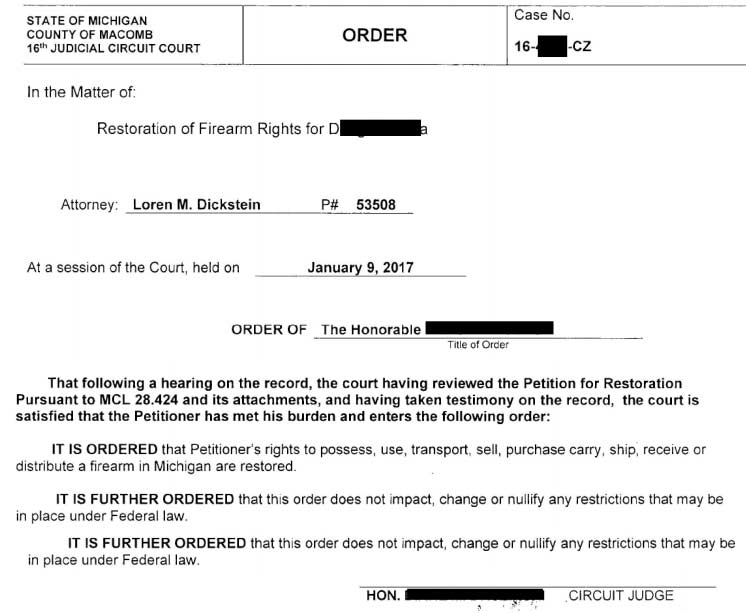When did the Supreme Court find a right to counsel?
In state court, by virtue of the Powell opinion, only indigent defendants accused of capital crimes had the right to a court-appointed attorney. Many states did provide for the right to an attorney for accused felons through statutes; other states did not. In 1963, the Supreme Court corrected these inequalities in GIDEON V. WAINWRIGHT, 372 U.S. 335, 83 S. Ct. 792, 9 L. Ed. 2d 799.
When was the first Supreme Court established?
May 31, 2012 · The U.S. Supreme Court grew into the most important judicial body in the world in terms of its central place in the American political order. …
What cases established the right of the indigent to an attorney?
May 31, 2012 · The Miranda rights are established. On June 13, 1966, the U.S. Supreme Court hands down its decision in Miranda v. Arizona, establishing the principle that all criminal suspects must be advised of ...
What court cases apply the 6th Amendment to States?
Gideon vs. Wainwright Gideon vs. Wainwright, 1963, was the case the Supreme Court used to apply the 6th Amendment's Right to Counsel Clause to the states. Before this time, from the inception of the 6th Amendment, the Amendment had applied only to the Federal government. In Gideon, a man was convicted in Florida without having an attorney.

What Supreme Court case established the right to a lawyer?
Gideon v. WainwrightThe Sixth Amendment gives defendants the right to counsel in federal prosecutions. However, the right to counsel was not applied to state prosecutions for felony offenses until 1963 in Gideon v. Wainwright, 372 U.S. 335.
What did Gideon v. Wainwright establish?
In 1963, the Supreme Court ruled unanimously in favor of Gideon, guaranteeing the right to legal counsel for criminal defendants in federal and state courts.
Is the right to an attorney in the Constitution?
The Sixth Amendment guarantees the rights of criminal defendants, including the right to a public trial without unnecessary delay, the right to a lawyer, the right to an impartial jury, and the right to know who your accusers are and the nature of the charges and evidence against you.
Which Court case established the right to a lawyer if a person Cannot afford one?
Gideon v. WainwrightThe Supreme Court's decision in Gideon v. Wainwright established the right to counsel under the Sixth Amendment, regardless of a defendant's ability to pay for an attorney.Oct 16, 2021
Why did the Supreme Court agree to hear Gideon's case?
Gideon next filed a handwritten petition in the Supreme Court of the United States. The Court agreed to hear the case to resolve the question of whether the right to counsel guaranteed under the Sixth Amendment of the Constitution applies to defendants in state court.
Why was the Betts case overruled?
Justice Black dissented, arguing that denial of counsel based on financial stability makes it so that those in poverty have an increased chance of conviction, which violates the Fourteenth Amendment Equal Protection Clause. This decision was overruled in 1963 in Gideon v. Wainwright.
What does the 3rd Amendment protect citizens from?
Described by some as “a preference for the Civilian over the Military,” the Third Amendment forbids the forcible housing of military personnel in a citizen's home during peacetime and requires the process to be “prescribed by law” in times of war.
What is Fifth Amendment right?
noun. an amendment to the U.S. Constitution, ratified in 1791 as part of the Bill of Rights, providing chiefly that no person be required to testify against himself or herself in a criminal case and that no person be subjected to a second trial for an offense for which he or she has been duly tried previously.
Which Amendment says you can't be tried twice?
the Fifth AmendmentOverview. The Double Jeopardy Clause in the Fifth Amendment to the US Constitution prohibits anyone from being prosecuted twice for substantially the same crime. The relevant part of the Fifth Amendment states, "No person shall . . . be subject for the same offense to be twice put in jeopardy of life or limb . . . . "
When was Erie decided?
Supreme Court decision. On April 25, 1938, the Supreme Court issued a 6–2 decision in favor of Erie Railroad reversing the Second Circuit's affirmation of Tompkins's jury verdict and remanding the case for further proceedings.
In which case did the U.S. Supreme Court hold that the defendant has the right to counsel during the course of any police interrogation?
Michigan v. JacksonIn Michigan v. Jackson, 475 U.S. 625 (1986), the Supreme Court held that the Sixth Amendment bars the police from initiating any interrogation of a defendant who has been formally charged and who has requested the right to counsel.
What case did the Supreme Court for the first time address indigent criminal defendants have a right to have an attorney provided to them at state expense select one?
Gideon v. WainwrightWhen Gideon v. Wainwright was decided by the U.S. Supreme Court in 1963, the right was established to have counsel appointed if a defendant was financially unable to pay for an attorney. Gideon and subsequent cases guarantee the right to appointed counsel to anyone charged with a felony or certain misdemeanors.Sep 30, 2016
Popular Posts:
- 1. when does the defense attorney have the chance to cross exam witnesses?
- 2. what vietnam pow was an attorney in florida
- 3. colorado attorney who shot five deputies
- 4. who is the new attorney general for colorado
- 5. what medical expenses can healthcare power of attorney deduct on tax return?
- 6. what dies it cost to have an attorney set up a 501c3
- 7. how much is ace attorney ip worth
- 8. which power of attorney form do i need for an elderly parent
- 9. attorney vs advocate
- 10. who is a us attorney accountable to?